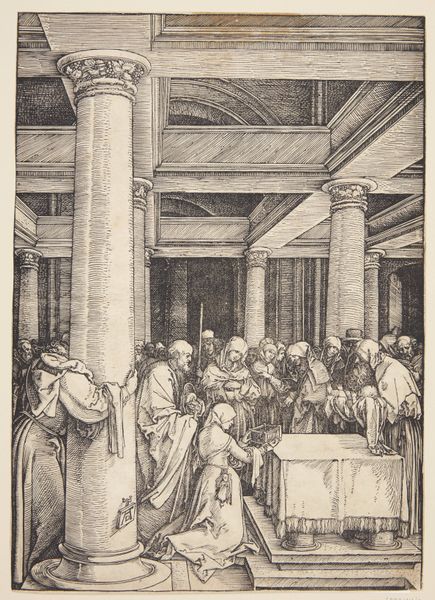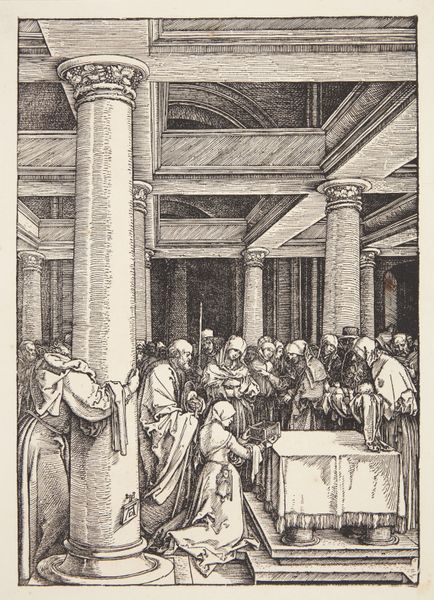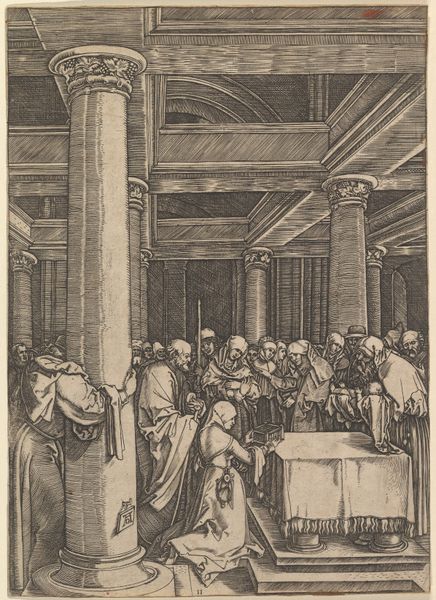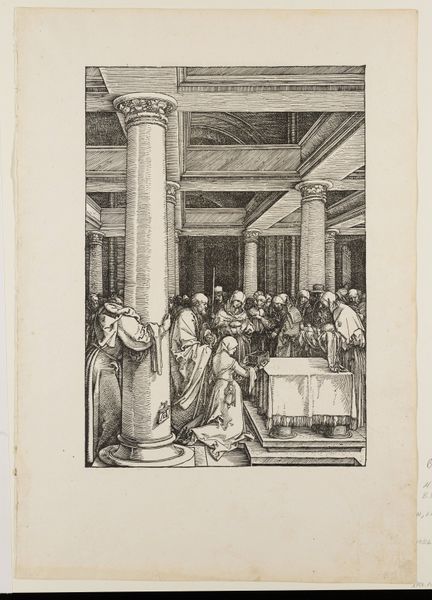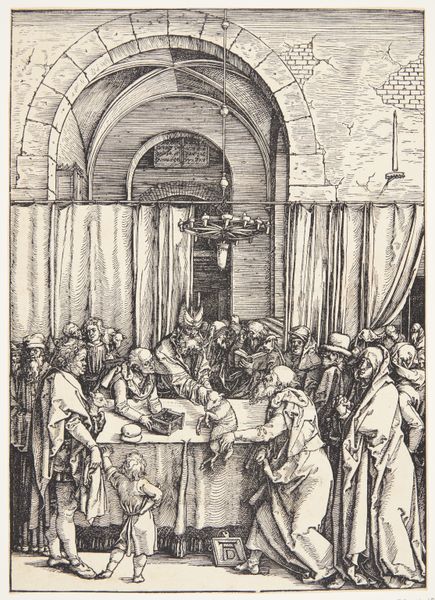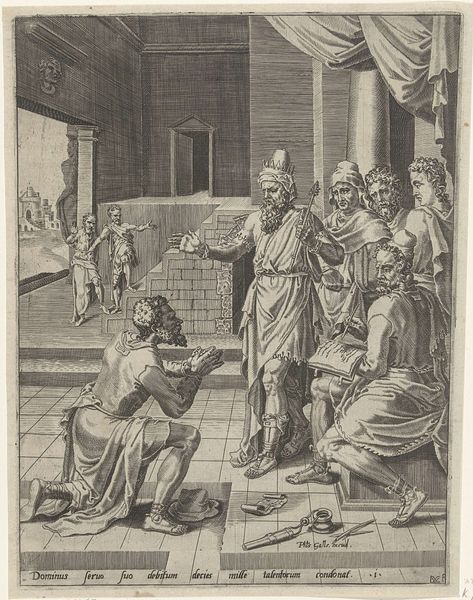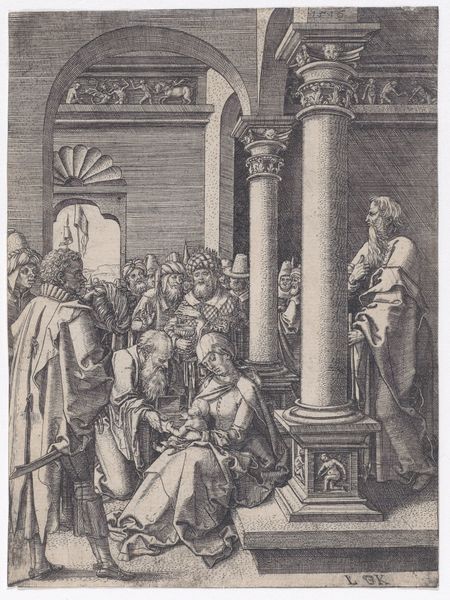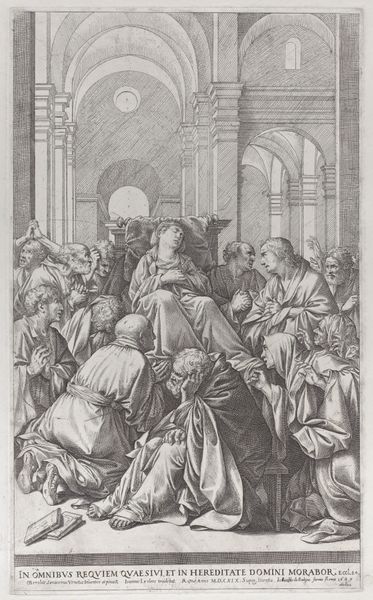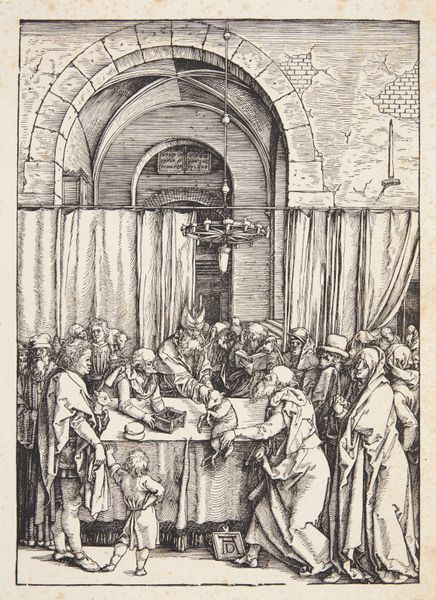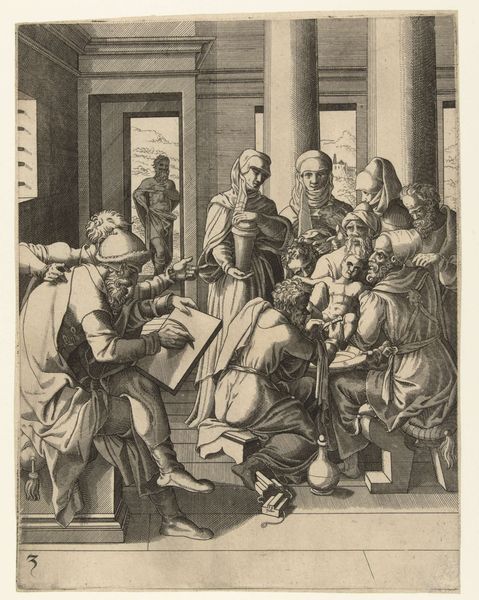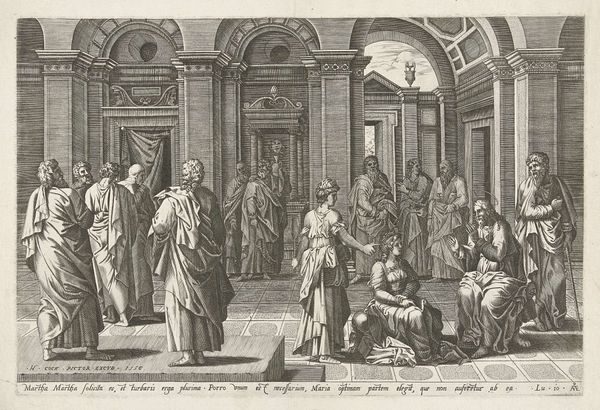
print, woodcut
# print
#
figuration
#
woodcut
#
line
#
history-painting
#
northern-renaissance
Dimensions: 296 mm (height) x 210 mm (width) (bladmaal)
Albrecht Dürer made this print, "The Presentation in the Temple," using a technique called woodcut. In woodcut, the artist carves an image into the surface of a block of wood, then inks and prints the raised areas. Look closely, and you’ll see the textures and lines created by Dürer’s carving. Woodcut was a relatively accessible medium, and the resulting prints were more affordable than paintings. This meant that Dürer’s work could reach a broader audience. The process itself is laborious, requiring immense skill. Dürer was a master of this craft. Notice the level of detail, and the use of line to create depth and shadow. The act of carving and printing transforms the image into something reproducible, bringing art to the masses in a way that handmade paintings simply couldn’t. Considering the material and process helps us to appreciate how Dürer blurred the lines between craft and high art. The social context of printmaking is crucial to understanding its impact at the time.
Comments
No comments
Be the first to comment and join the conversation on the ultimate creative platform.
